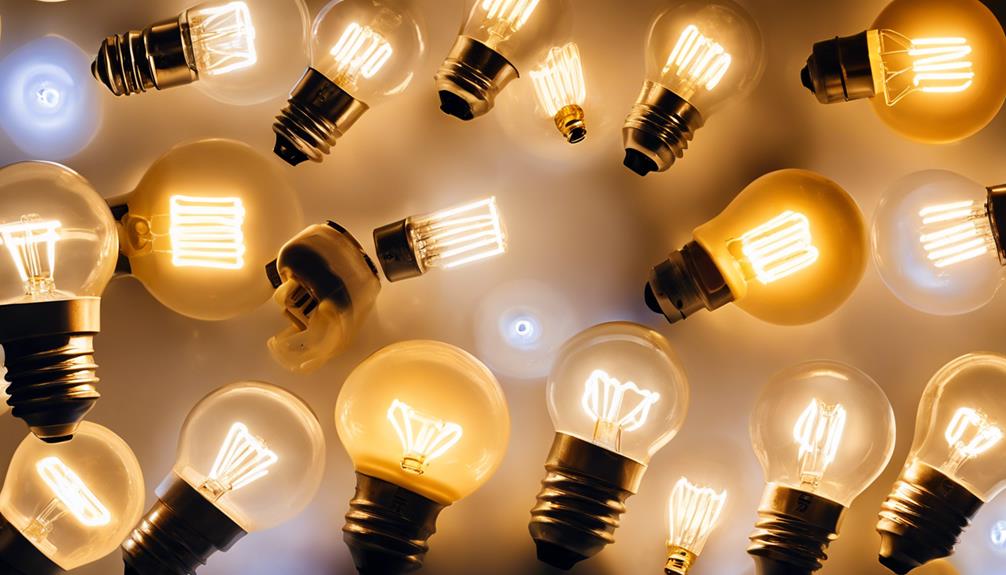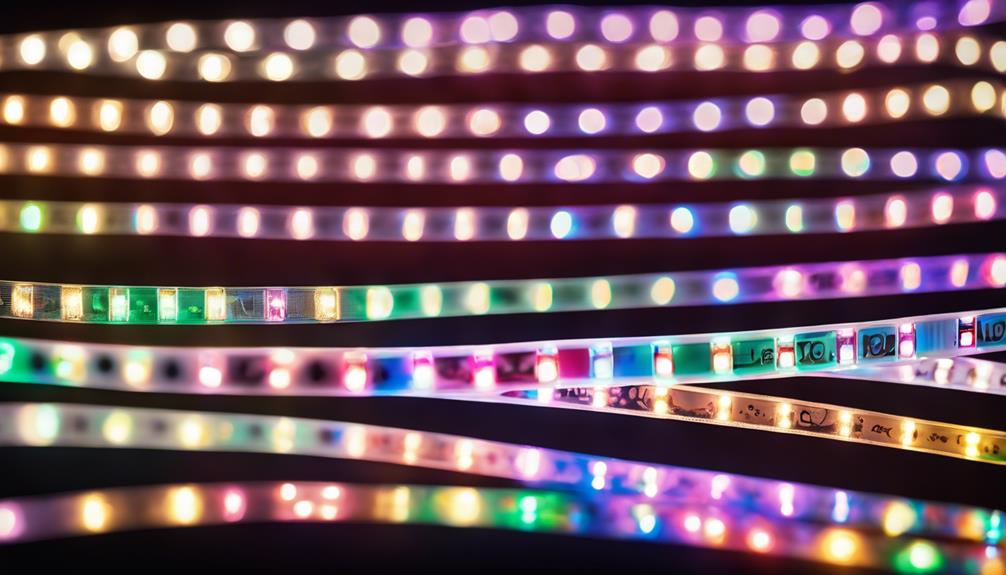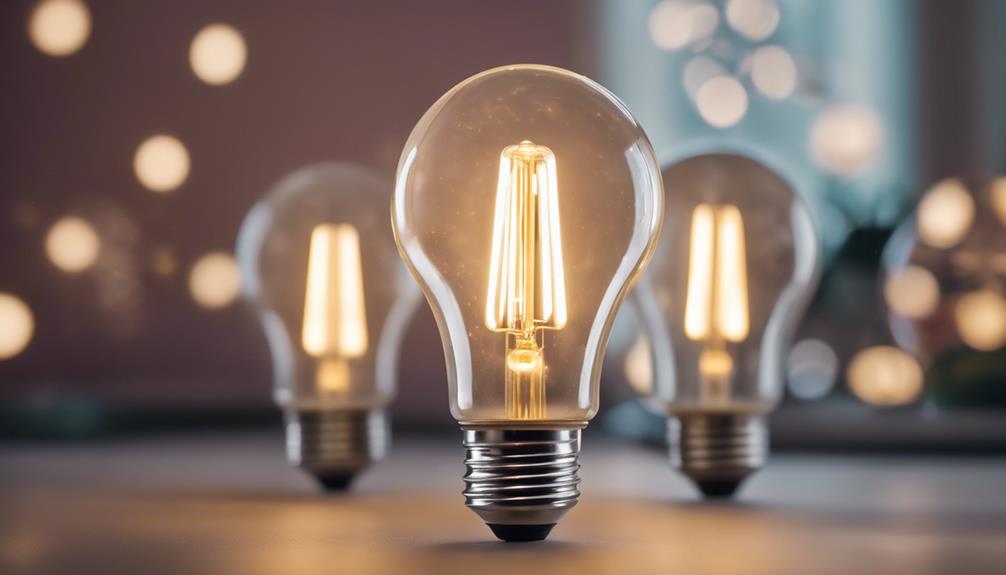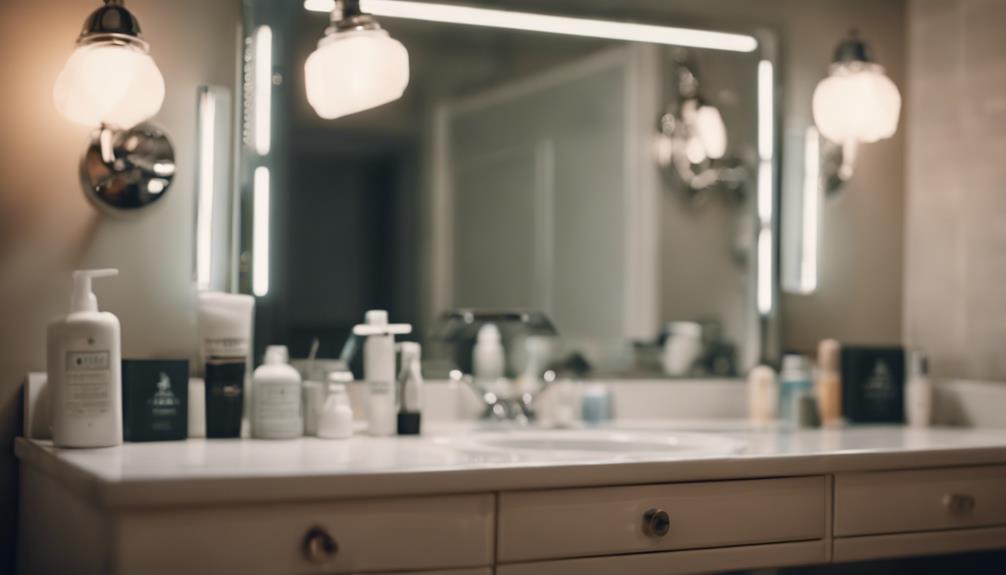Top LED lights from popular brands such as Govee, Philips Hue, Sengled, LIFX, and Nanoleaf have had a strong presence this year, showcasing advanced technology and versatile lighting options. Govee’s RGBIC technology and Philips Hue’s high-quality systems are leading the way in LED strip lights. Looking ahead to 2024, Govee’s RGBIC LED strip lights and Feit Electric’s top-notch bulbs are expected to shine. When it comes to LED light strips, L8star emerges as the most brilliant choice, combining style and functionality. Floodlight LED bulbs from Cree, Philips, and GE offer exceptional brightness, energy efficiency, and long-lasting performance. Explore further details on the best LED lights of the year for cutting-edge lighting solutions.
Key Takeaways
- Govee LED strip lights with RGBIC tech offer vivid color effects.
- Feit Electric LED bulbs boast brilliant color quality and dimmer compatibility.
- L8star Smart LED strip stands out as the brightest option.
- Cree LED floodlight bulbs excel in brightness, energy efficiency, and durability.
- LED lights provide energy efficiency, longevity, and versatile lighting options.
Top LED Strip Lights Brands
Among the top LED strip lights brands, Govee stands out for its vivid, color-changing effects and innovative RGBIC technology. Govee's LED strips are equipped with RGBIC, allowing for dynamic color combinations and effects that respond to voice commands. This advanced technology sets Govee apart in the market, providing users with a customizable and immersive lighting experience. Additionally, Govee's compatibility with smart assistants enhances user convenience by enabling voice control of the lights.
While Govee excels in color-changing effects, Philips Hue focuses on providing premium LED light strip systems known for their superior flexibility and functionality. Sengled offers affordable RGB options tailored for TV backlighting, incorporating smart features for added convenience. LIFX Strip Light stands out for its bright, vivid colors and seamless integration with popular smart assistants like Alexa, Google Assistant, and Siri. Nanoleaf Essentials Lightstrip, on the other hand, offers multicolor RGBW options and smooth integration with Matter compatible platforms, including Apple Home, Google Home, and Samsung SmartThings.
Best LED Bulbs for 2024

Govee's vibrant LED strip lights with innovative RGBIC technology have set a high standard in the market, and looking ahead to 2024, discerning consumers are seeking the best LED bulbs to elevate their lighting experience.
Feit Electric LED bulbs offer brilliant color quality, wide dimmer compatibility, and affordability at $13 for a pack of four at Home Depot. Meanwhile, Philips Hue LED bulbs provide a cool white light, superior color accuracy, and even dimmability, priced at $13 for a pack of four on Amazon or Home Depot.
Both Feit Electric Enhance and Philips Ultra Definition LED bulbs create warm dimmable lighting ambiance, enhancing the overall lighting experience. Choosing Feit Electric Enhance Soft White and Daylight A19 Dimmable LED Light Bulbs, or Philips Ultra Definition A19 Dimmable LED Light Bulb guarantees excellent lighting solutions.
These LED bulbs not only offer energy efficiency and long-lasting durability but also provide better color quality than incandescent bulbs, ensuring reliable performance and a warm lighting ambiance for consumers in 2024.
Top LED Light Strips

LED light strips offer a range of brightness levels for varying lighting needs. Consumers can choose from a variety of length options to suit different spaces and designs.
Tips on installation ease can help users set up their LED light strips quickly and efficiently.
Brightness Levels Comparison
Nexlux Smart LED strip outshines its competitors with a brightness level of 477 Lux, providing ample illumination for various settings.
When comparing brightness levels of top LED light strips, here are some key points to take into account:
- LE RGB Strip Lights offer a vibrant lighting experience with 645 Lux brightness.
- Govee Smart LED strip boasts 475 Lux, suitable for various lighting needs.
- Pangton LED strip, spanning 32.8 feet, provides an economical option for extended lighting coverage.
- L8star Smart LED strip emerges as the brightest option overall, ensuring ample illumination in any space.
Length Options Available
With a variety of length options available, top LED light strips cater to diverse lighting needs and space requirements. These options typically range from 4 feet to 8 feet, with some brands even offering longer choices like 16.4 feet, 32.8 feet, and ultra-long 65.5 feet options.
Whether for accent lighting in smaller areas or illuminating larger spaces, different lengths allow for versatile applications. Longer LED light strips are particularly useful for covering extensive surfaces or creating continuous lighting effects. Consumers can select the appropriate length based on their specific area to be illuminated and the desired lighting design, ensuring they achieve the perfect lighting solution for their space.
Installation Ease Tips
For a smoother installation experience with top LED light strips, consider key factors like the material coating and the quality of the double-sided tape. LED light strips with rubber-coated material offer both easier installation and increased durability.
High-quality double-sided tape guarantees secure mounting, preventing the strips from falling off. Opt for LED light strips with longer power cords to provide flexibility in installation, allowing you to reach distant power sources without difficulty.
Beware of products with poor instructions, as clear guidance simplifies the installation process. Additionally, uncoated LED light strips may offer more fragile but potentially flexible installation options.
LED Floodlight Bulbs Review

LED floodlight bulbs come in various options, each excelling in specific areas.
From brightness comparison to energy efficiency ratings, and longevity and durability, consumers have a range of factors to take into account when selecting the right LED floodlight bulb for their needs.
Understanding these key points can guide individuals towards making informed decisions that align with their lighting requirements.
Brightness Comparison
Among the array of LED floodlight bulbs reviewed, the Cree 65W Replacement LED bulb stands out for its exceptional brightness that surpasses its advertised specifications. This LED bulb offers remarkable brightness and color accuracy, making it ideal for outdoor use, especially for security lighting.
Additionally, it's energy-efficient and comes with a 10-year warranty, ensuring long-term reliability. The vividness of the light emitted by this bulb enhances visibility, providing a clear and well-lit environment. The Cree LED bulb isn't only budget-friendly but also flicker-free, offering consistent and reliable lighting performance.
Energy Efficiency Rating
In the domain of energy-efficient lighting solutions, the performance of LED floodlight bulbs plays a pivotal role in determining their suitability for various applications. Cree 65W Replacement Floodlight LED bulbs offer brighter illumination than advertised, making them a cost-effective choice.
Philips BR30 Floodlight LED bulbs come with a durable 10-year warranty, providing flicker-free lighting at a lower cost compared to some alternatives.
GE Basic 65W Replacement Floodlight LED bulbs, a budget-friendly option, are dimmable and suitable for upgrading outdoor security lights.
Philips SceneSwitch Floodlight LED bulbs with three light settings in one bulb are ideal for non-dimmer switches, boasting energy efficiency with a power draw of 8 watts.
GE Reveal BR30 Floodlight LED bulbs excel in color accuracy and vividness, making them a top choice for outdoor security lighting.
Longevity and Durability
Longevity and durability are key factors to take into consideration when evaluating the performance of LED floodlight bulbs, impacting their suitability for various lighting applications.
- Cree 65W Replacement Floodlight LED bulb offers a bright, long-lasting solution with a 10-year warranty.
- Philips BR30 Floodlight LED bulb provides excellent color accuracy and a warm tone when dimmed.
- GE Basic 65W Replacement Floodlight LED bulb is a budget-friendly option that's energy-efficient and dimmable.
- Philips SceneSwitch Floodlight LED bulb offers three different light settings in one bulb for versatility.
These LED lights excel in providing a smart, long-lasting, and energy-efficient lighting solution. Whether for outdoor security or versatile indoor lighting needs, the durability and longevity of these bulbs make them a popular choice for consumers seeking high-quality illumination.
6 Best LED Strip Lights

When considering the best LED strip lights, one standout option is the Govee M1 Smart LED Strip Light for its RGBIC color and compatibility with Alexa via Bluetooth and Wi-Fi. This smart light offers 72 watts of power and allows for seamless control through various devices. Another notable choice is the Philips Hue Bluetooth Smart Lightstrip Plus, providing gradient color with 20 watts of power and compatibility with Alexa, Google Assistant, and Siri when used with a hub. For those seeking multicolor RGBW lighting, the Nanoleaf Essentials Matter Lightstrip is a top contender, offering 23 watts of power and compatibility with Matter, Apple Home, Google Home, and Samsung SmartThings. Various other options like the LIFX Lightstrip Color Zones, Eve Light Strip for Apple HomeKit, and Kasa Smart Multicolor Light Strip cater to different preferences regarding features and compatibility.
| LED Strip Lights | Features | Compatibility |
|---|---|---|
| Govee M1 Smart LED Strip | RGBIC color | Alexa, Bluetooth, Wi-Fi |
| Philips Hue Smart Lightstrip Plus | Gradient color | Alexa, Google Assistant, Siri |
| Nanoleaf Essentials Matter Lightstrip | RGBW lighting | Matter, Apple Home, Google Home, SmartThings |
Smart LED Light Bulbs

Smart LED light bulbs, like those from Feit Electric and Philips Hue, offer advanced features and exceptional lighting quality for modern homes. These bulbs are designed to enhance the ambiance and functionality of living spaces while providing energy-efficient and long-lasting lighting solutions.
Here are some key features of the best smart LED light bulbs:
- Feit Electric bulbs offer wide dimmer compatibility and superior color accuracy, making them a versatile choice for various settings.
- Philips Hue bulbs provide cool white light and excellent color accuracy, ensuring a comfortable and well-lit environment.
- Both Feit Electric Enhance and Philips Ultra Definition bulbs offer warm dimmable lighting, catering to different preferences and creating a cozy atmosphere.
- LED bulbs from Feit and Philips are known for their superior color quality and durability, outperforming traditional incandescent bulbs regarding performance and longevity.
Frequently Asked Questions
What Are the Most Recommended LED Lights?
LED lights vary in features and compatibility, with top contenders like Govee M1, Philips Hue Bluetooth, Nanoleaf Essentials Matter, and LIFX Lightstrip Color Zones. These options offer unique characteristics such as RGBIC color, gradient colors, multicolor RGBW, and multicolor lighting, catering to diverse preferences.
Integration with smart assistants like Alexa, Google Assistant, and Siri further enhances user experience. Testing guarantees peak performance in various indoor settings, making them popular choices.
What Is the Number One LED Light Brand?
Philips Hue stands as the top choice for LED lights, renowned for its quality and versatility. With color-changing options and compatibility with smart home assistants, it offers a broad range of lighting solutions.
Known for durability and energy efficiency, Philips Hue lights are eco-friendly and cost-effective. Their innovative design and seamless integration with smart systems make them a popular and reliable choice for consumers seeking customizable lighting options.
What Company Sells the Best LED Lights?
When looking for the best LED lights, customers can consider various factors such as brand reputation, innovative features, design aesthetics, and smart home compatibility. Companies like Govee, Philips, Nanoleaf, LIFX, and Eve are among the top contenders known for their quality offerings.
Each brand caters to different preferences, from customizable options to seamless integration with smart assistants. Exploring these brands can help consumers find the LED lights that best suit their needs.
What LED Lights Make You Look the Best?
When it comes to looking your best, LED lights with a high Color Rendering Index (CRI) of 90 or above can work wonders. Opt for warm white LEDs around 2700-3000K to create a flattering ambiance.
Adjustable brightness and dimmable options allow for personalized lighting control. Wide beam angles help reduce harsh shadows.
Smart LEDs with color temperature adjustments offer customizable lighting for enhancing your appearance in any setting.
Conclusion
To sum up, the most popular LED lights of the year offer a range of options for consumers looking to brighten their homes or workspaces. From top LED strip light brands to the best LED bulbs for 2024, there's something for everyone.
These energy-efficient and versatile lighting options not only provide bright illumination but also add a touch of style to any room.
So why settle for ordinary lighting when you can shine bright with these top LED choices?




